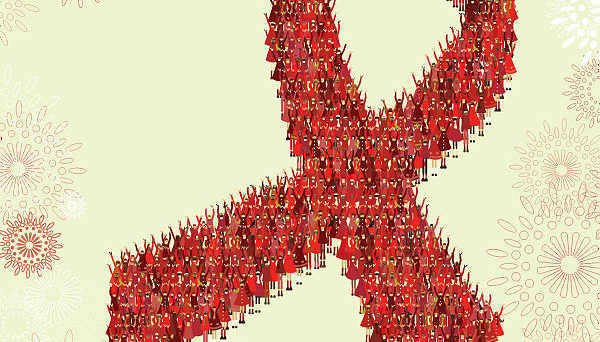
This year’s theme for World AIDS Day recognizes the vital role of communities in supporting and educating at a local level, helping to deliver services at a regional level and raising awareness at a global level. This blog highlights research registered at the ISRCTN registry that investigates how to harness community power to reduce transmission of HIV and improve the wellbeing of people living with HIV/AIDS.
Targeting gender inequality to improve health
In many regions, lack of education and resources are linked to increased rates of early marriage and childbearing, gender-based violence, condomless intercourse and transactional sex.
In many regions, lack of education and resources are linked to increased rates of early marriage and childbearing, gender-based violence, condomless intercourse and transactional sex. These factors increase HIV transmission and impact, so a key intervention point is to empower adolescent girls.
The AGEP study recruited girls and women aged 10-19 in Zambia and provided three of the four groups with 2 years of ‘safe space’ meetings run by slightly older women from the community discussing health, life and financial skills. One group additionally received vouchers enabling the purchase of health services and another received health vouchers and a savings account set up in their name.
Results did not show a significant effect on child marriage rates, contraceptive use or HIV prevalence, but the meetings did impact rates of transactional sex for those who were already sexually active and those who received all three interventions showed the most positive change.
The Population Council, which sponsored this trial, has concluded that deeper socio-economic intervention is required and has made recommendations to the Determined, Resilient, Empowered, AIDS-free, Mentored and Safe (DREAMS) initiative.

This includes the GirlsRead! Zambia study, which examined the effect of giving girls in the last year of primary school an e-reader loaded with books by African authors containing positive female narratives, as well as providing the ‘safe space’ meetings. This intervention appeared to improve literacy and non-verbal reasoning scores, but the study would need to be scaled up to demonstrate significant effects on health.
The Population Council is also conducting a study to investigate the effectiveness of the One Community program in Malawi. This initiative aims to encourage HIV testing and use of healthcare services, reduce sexual behaviours associated with HIV transmission, and encourage gender equality in at-risk populations, including orphans and other vulnerable children, adolescent girls and young women.
In South Africa, an ongoing study is evaluating a PEPFAR/USAID community responses program that aims to raise awareness of sexual and gender-based violence and HIV prevention.
Peer outreach and mentoring
Peers have unique access to hard-to-reach groups, particularly where there is a stigma within the community or the behavior is illegal.
Peers have unique access to hard-to-reach groups, particularly where there is a stigma within the community or the behavior is illegal. The DANIDA KP study in Tanzania is training injecting drug users, men who have sex with men (MSM), and women who exchange sex for goods or money to advise others at higher risk of HIV infection how to access healthcare and violence prevention services. The protocol has been published in BMC Health Services Research.
A study taking place in the UK and Uganda is developing and testing an intervention that uses peer mentors to facilitate young people with perinatally acquired HIV infection disclosing their status to potential sexual partners.
The UK TARGET feasibility study will compare whether cards given out to peers by men and transgender people who have sex with men who have been trained as Testing Champions elicit more online blood-borne virus testing kit returns than poster advertising in LGBT venues.
Online communities

People also connect in virtual communities. The SELPHI trial advertised in apps, such as Grindr, and Facebook pages targeting men and transgender people who have sex with men. Examples of the ads and messages are viewable in the published protocol. People who responded to the ads and were eligible were randomized to receive no baseline testing or an HIV self-testing kit, where a person can use a diagnostic kit to test their blood or saliva at home and get a result in 15 minutes.
Results of the pilot phase showed that the kits were acceptable, with 96% used within 3 months of receipt, and that the ads could recruit MSM throughout England and Wales who were reasonably diverse in terms of age, ethnicity and educational background, although trans women were under-recruited.
Conclusion
HIV/AIDS healthcare and support can increasingly be managed within communities. Reducing HIV transmission involves broader social, cultural and structural change to empower disadvantaged people and eliminate stigma. Everyone can contribute to making this change happen within their community, even if they are not directly affected by HIV/AIDS. On this World AIDS Day, why not think about how you can contribute to building societies where there is no longer the inequality that leads to ill health?
Comments